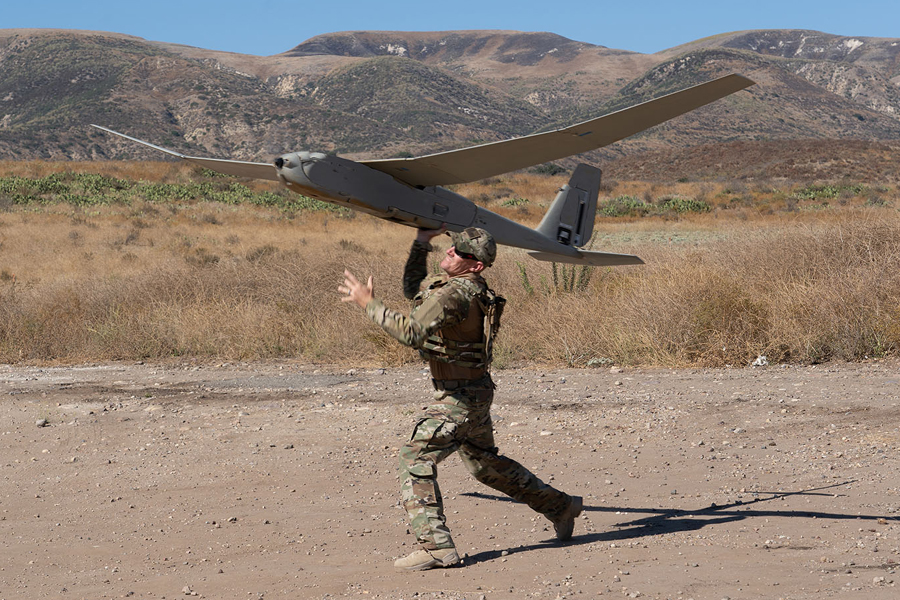The air domain refers to the portion of the atmosphere that is accessible and utilized by aircraft, missiles, drones, and other aerial platforms. It encompasses the space from ground level up to the edge of outer space, but practically focuses on the troposphere and lower stratosphere where most aviation activities occur. This domain is one of the most dynamic and strategically vital arenas for both civilian and military operations, playing an indispensable role in transportation, commerce, surveillance, communication, and defense. Characteristics of the Air Domain The air domain is unique compared to other domains such as land, sea, and cyber, due to its three-dimensional nature. This adds complexity to maneuvering, control, and monitoring. Unlike the land or sea, where movement is generally restricted to two dimensions, aircraft can operate vertically, horizontally, and laterally with relative freedom, offering unparalleled flexibility. However, the air domain also has inherent challenges. The atmosphere’s density changes with altitude, affecting aerodynamics and engine performance. Weather conditions such as wind, turbulence, storms, and temperature variations significantly influence operations. Furthermore, the air domain is transient — aircraft are always in motion, making control and situational awareness critical. Strategic Importance of the Air Domain From a military perspective, control over the air domain often translates to a decisive advantage in warfare. The ability to project power quickly and effectively across great distances can determine the outcome of conflicts. Air superiority allows forces to protect friendly troops, disrupt enemy movements, and conduct reconnaissance and precision strikes with minimal warning. Historically, air power revolutionized warfare during the 20th century. In World War I and II, dominance of the skies became crucial for bombing campaigns and protecting naval and ground forces. Today, modern air domains include not only traditional manned aircraft but also unmanned aerial vehicles (UAVs), hypersonic missiles, and satellite systems, expanding the operational spectrum dramatically. In peacetime, the air domain underpins global connectivity. Commercial aviation transports millions of passengers and goods daily, supporting economies and cultural exchange. Airspace management and safety protocols are critical to maintaining order amid the vast number of daily flights worldwide. Control and Security in the Air Domain Managing the air domain requires sophisticated technologies and international cooperation. Civil aviation authorities, such as the Federal Aviation Administration (FAA) in the United States and the International Civil Aviation Organization (ICAO), regulate airspace to ensure safety and efficiency. Air traffic control (ATC) systems monitor aircraft movements, provide guidance, and prevent collisions. On the defense side, nations invest heavily in radar, early-warning systems, and interceptor aircraft to monitor and secure their airspace. Air defense systems, including surface-to-air missiles and electronic warfare capabilities, are deployed to detect and counter threats. The concept of air sovereignty is fundamental, granting states exclusive rights to regulate and control airspace above their territories. Violations of this sovereignty, such as unauthorized military flights or drone incursions, can escalate diplomatic tensions or military responses. Technological Innovations Shaping the Air Domain The air domain has witnessed rapid technological advancements that continue to redefine its capabilities and strategic importance: Challenges in the Air Domain Despite its advantages, the air domain faces several challenges: The Future of the Air Domain Looking ahead, the air domain will continue to evolve with technology and geopolitical dynamics. Key trends likely to shape its future include: Conclusion The air domain is a vital and complex arena that bridges the skies for military operations, commercial aviation, and emerging technologies. Mastery over this domain provides nations with strategic advantages, economic benefits, and the means to address modern challenges. As technology advances and global interconnectivity grows, the air domain will remain a crucial frontier shaping the future of transportation, defense, and international cooperation.
